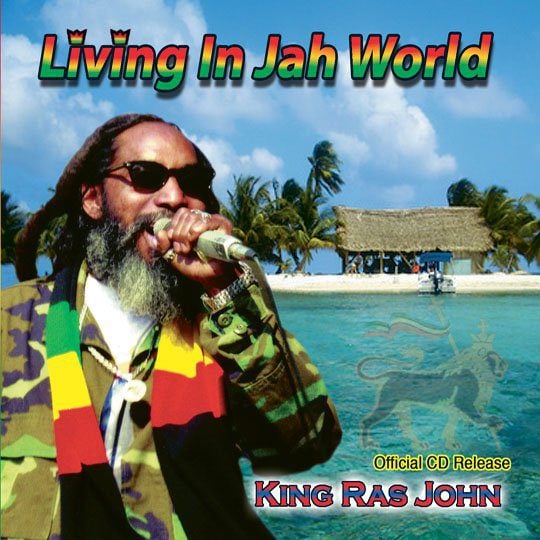Blog
Wilbur Bernard Ware (September 8, 1923 – September 9, 1979) was an American jazzdouble bassist. He was a regular bassist for the Riverside record label in the 1950s, and recorded regularly in that decade with Johnny Griffin, Kenny Dorham, Kenny Drew, and Thelonious Monk. He also appeared on records released by J.R. Monterose, Toots Thielemans, Sonny Clark, Tina Brooks, Zoot Sims, and Grant Green, among others.
Ware grew up in Chicago where he taught himself to play drums, banjo, bass while playing at church. In the 1940s, he worked with Stuff Smith, Sonny Stitt, and Roy Eldridge. He recorded with Sun Ra in the early 1950s. Later in the 1950s, settling in New York City, Ware played with Eddie Vinson, Art Blakey, and Buddy DeFranco. His only album recorded as a leader and released during his lifetime was The Chicago Sound, from 1957 when he worked for Riverside. He made jazz instructional albums for Music Minus One. In 1958, Ware was one of 57 jazz musicians to appear in the photograph A Great Day in Harlem. Ware’s addiction to narcotics resulted in his return to Chicago in 1963, and then to a period of incarceration. He was inactive musically for about six years. In 1969, Ware played with Clifford Jordan, Elvin Jones and Sonny Rollins.[2] He died from emphysema in Philadelphia, Pennsylvania, in 1979
more...Saturday 9-7-24 from 4-7pm Performing at the 4 Mile Restaurant & Bar in Eau Claire, WI https://4milerestaurant.com/ Featuring Ras John, Cutter, Bounmi, Rich, Kurt and mick Bamboula.

The arrangement of the spiral arms in the galaxy Messier 63, seen here in a new image from the NASA/ESA Hubble Space Telescope, recall the pattern at the centre of a sunflower. So the nickname for this cosmic object — the Sunflower Galaxy — is no coincidence. Discovered by Pierre Mechain in 1779, the galaxy later made it as the 63rd entry into fellow French astronomer Charles Messier’s famous catalogue, published in 1781. The two astronomers spotted the Sunflower Galaxy’s glow in the small, northern constellation Canes Venatici (the Hunting Dogs). We now know this galaxy is about 27 million light-years away and belongs to the M51 Group — a group of galaxies, named after its brightest member, Messier 51, another spiral-shaped galaxy dubbed the Whirlpool Galaxy. Galactic arms, sunflowers and whirlpools are only a few examples of nature’s apparent preference for spirals. For galaxies like Messier 63 the winding arms shine bright because of the presence of recently formed, blue–white giant stars, readily seen in this Hubble image. 27mly.

Mark Ware Isham (born September 7, 1951) is an American musician and composer. A trumpeter and keyboardist, Isham works in a variety of genres, including jazz and electronic. He is also a prolific and acclaimed composer of film scores, and has scored over 200 film and television productions since his debut in 1983.
Isham is a nine-time Grammy Award nominee, winning Best New Age Album for his 1990 self-titled album. He was nominated for an Academy Award for A River Runs Through It (1992), and a Golden Globe Award for Nell (1994). He has also been nominated for six Primetime Emmy Awards, winning Outstanding Original Main Title Theme Music for EZ Streets.
more...Christine Ellen Hynde (born September 7, 1951 Akron, OH) is an American-British musician. She is a founding member and the lead vocalist, guitarist, and primary songwriter of the rock band The Pretenders, and one of the band’s two remaining original members alongside drummer Martin Chambers. She is the only continuous member of the band, appearing on every studio album.
Hynde formed the Pretenders in Hereford, England in 1978, with Pete Farndon, James Honeyman-Scott and Chambers. She has also recorded a number of songs with other musicians including Frank Sinatra, Cher and UB40. She recorded her first solo album, Stockholm, in 2014. Hynde was inducted into the Rock and Roll Hall of Fame in 2005 as a member of the Pretenders.
https://www.youtube.com/watch?v=LzCPYWyd9v4
more...Charles Hardin Holley (September 7, 1936 – February 3, 1959 Lubbock, TX), known as Buddy Holly, was an American singer, songwriter and musician who was a central and pioneering figure of mid-1950s rock and roll. He was born to a musical family in Lubbock, Texas, during the Great Depression, and learned to play guitar and sing alongside his siblings. Holly’s style was country and western music which he performed in Lubbock with his friends from high school.
Holly made his first appearance on local television in 1952, and the following year he formed the group Buddy and Bob with his friend Bob Montgomery. In 1955, after opening for Elvis Presley as part of the Louisiana Hayride’s habit of seeking out local bands to add to the show, Holly decided to pursue a career in music. Subsequently, he played with Presley three times that year and his band’s style shifted from country and western to entirely rock and roll. In October that year, when Holly opened for Bill Haley & His Comets, he was spotted by Nashville scout Eddie Crandall, who helped him get a contract with Decca Records.
Holly’s recording sessions at Decca were produced by Owen Bradley, who had become famous for producing orchestrated country hits for stars like Patsy Cline. Unhappy with Bradley’s musical style and control in the studio, Holly went to producer Norman Petty in Clovis, New Mexico, and recorded a demo of “That’ll Be the Day“, among other songs. Petty became the band’s manager and sent the demo to Brunswick Records, which released it as a single credited to The Crickets, a name chosen by the band to subvert Decca’s contract limitations. It became the name of Holly’s band. In September 1957, as the band toured, “That’ll Be the Day” topped the US and UK singles charts. Its success was followed in October by another major hit, “Peggy Sue“.
The album The “Chirping” Crickets, released in November 1957, reached number five on the UK Albums Chart. Holly made his second appearance on The Ed Sullivan Showin January 1958 and soon after toured Australia and then the UK. In early 1959, he assembled a new band, consisting of future country music star Waylon Jennings (bass), famed session musician Tommy Allsup (guitar), and Carl Bunch (drums), and embarked on a tour of the mid-western US. After a show in Clear Lake, Iowa, Holly chartered an airplane to travel to his next show in Moorhead, Minnesota. Soon after takeoff, the plane crashed, killing Holly, Ritchie Valens, The Big Bopper, and pilot Roger Peterson in a tragedy later referred to by Don McLean as “The Day the Music Died” in his song “American Pie“.
During his short career, Holly wrote and recorded many songs. He is often regarded as the artist who defined the traditional rock-and-roll lineup of two guitars, bass, and drums. This was unfounded considering he first saw Elvis with this line-up in Lubbock in 1955 when Holly was strictly a country music band. Holly was a major influence on later popular music artists, including Bob Dylan, the Beatles, the Rolling Stones, Eric Clapton, Brian May, Cliff Richard, the Hollies, Elvis Costello, Jeff Beck, Dave Edmunds, Fiona Apple, Lou Reed, Marshall Crenshaw, Freddie Mercury and Elton John. Holly was among the first artists inducted into the Rock and Roll Hall of Fame, in 1986. Rolling Stone magazine ranked him number 13 in its list of 100 Greatest Artists in 2010.
more...
James Milton Campbell Jr. (September 7, 1934 – August 4, 2005 Inverness, MS), better known as Little Milton, was an American blues singer and guitarist, best known for his number-one R&B single “We’re Gonna Make It“. His other hits include “Baby, I Love You“, “Who’s Cheating Who?”, and “Grits Ain’t Groceries (All Around The World)“.
A native of the Mississippi Delta, Milton began his recording career in 1953 at Sun Records before relocating to St. Louis and co-founding Bobbin Records in 1958. It wasn’t until Milton signed to Checker Records that he achieved success on the charts. Other labels Milton recorded for include Meteor, Stax, Glades, Golden Ear, MCA, and Malaco. Milton was inducted into the Blues Hall of Fame in 1988.
more...Walter Theodore “Sonny” Rollins (born September 7, 1930) is an American retired jazz tenor saxophonist who is widely recognized as one of the most important and influential jazz musicians. In a seven-decade career, he has recorded over sixty albums as a leader. A number of his compositions, including “St. Thomas“, “Oleo“, “Doxy“, and “Airegin“, have become jazz standards. Rollins has been called “the greatest living improviser”. Due to health problems, Rollins has not performed publicly since 2012 and announced his retirement in 2014.
Rollins was born in New York City to parents from the Virgin Islands. The youngest of three siblings, he grew up in central Harlem and on Sugar Hill, receiving his first alto saxophone at the age of seven or eight. He attended Edward W. Stitt Junior High School and graduated from Benjamin Franklin High School in East Harlem. Rollins started as a pianist, then switched to alto saxophone after being inspired by Louis Jordan and finally switched to tenor saxophone in 1946, influenced by his idol Coleman Hawkins. During his high school years, he played in a band with other future jazz legends Jackie McLean, Kenny Drew, and Art Taylor.
more...Friday August 6th 2024 6pm Erev Shabbat Service with Inbal Sharett-Singer, Jayson Rodovsky, Jeff Bailey, Pete Whitman and mick laBriola.
more...The galaxy cluster MACS-J0417.5-1154 is so massive it is warping the fabric of space-time and distorting the appearance of galaxies behind it, an effect known as gravitational lensing. This natural phenomenon magnifies distant galaxies and can also make them appear in an image multiple times, as NASA’s James Webb Space Telescope saw here. Two distant, interacting galaxies — a face-on spiral and a dusty red galaxy seen from the side — appear multiple times, tracing a familiar shape across the sky. Active star formation, and the face-on galaxy’s remarkably intact spiral shape, indicate that these galaxies’ interaction is just beginning. Astronomers used both telescopes to observe the galaxy cluster MACS-J0417.5-1154, which acts like a magnifying glass because the cluster is so massive it warps the fabric of space-time. This allows astronomers to see enhanced detail in much more distant galaxies behind the cluster. However, the same gravitational effects that magnify the galaxies also cause distortion, resulting in galaxies that appear smeared across the sky in arcs and even appear multiple times. These optical illusions in space are called gravitational lensing. 4.65 Bly distant!

George Roger Waters (born 6 September 1943) is an English musician and singer-songwriter. In 1965, he co-founded the rock band Pink Floyd as the bassist. Following the departure of the songwriter, Syd Barrett, in 1968, Waters became Pink Floyd’s lyricist, co-lead vocalist and conceptual leader until his departure in 1985.
Pink Floyd achieved international success with the concept albums The Dark Side of the Moon (1973), Wish You Were Here (1975), Animals (1977), The Wall (1979), and The Final Cut (1983). By the early 1980s, they had become one of the most acclaimed and commercially successful groups in popular music. Amid creative differences, Waters left in 1985 and began a legal dispute over the use of the band’s name and material. They settled out of court in 1987. Waters’s solo work includes the studio albums The Pros and Cons of Hitch Hiking (1984), Radio K.A.O.S. (1987), Amused to Death (1992), and Is This the Life We Really Want? (2017). In 2005, he released Ça Ira, an opera translated from Étienne and Nadine Roda-Gils’ libretto about the French Revolution.
In 1990, Waters staged one of the largest rock concerts in history, The Wall – Live in Berlin, with an attendance of 450,000. As a member of Pink Floyd, he was inducted into the US Rock and Roll Hall of Fame in 1996 and the UK Music Hall of Fame in 2005. Later in 2005, he reunited with Pink Floyd for the Live 8 global awareness event, their only appearance with Waters since 1981. He has toured extensively as a solo act since 1999. He performed The Dark Side of the Moon for his world tour of 2006–2008, and The Wall Live, his tour of 2010–2013, was the highest-grossing tour by a solo artist at the time.
Waters incorporates political themes in his work and is a prominent supporter of Palestine in the Israeli–Palestinian conflict. He has called for the removal of the Israeli West Bank Barrier, supports the Boycott, Divestment and Sanctions movement against Israel, and describes Israel’s treatment of Palestinians as apartheid. Some of his comments, such as his likening of Israel to Nazi Germany, and elements of his live shows, drew accusations of antisemitism, which Waters dismissed as a conflation of anti-Semitism with anti-Zionism.
more...Edward Lozano Duran (September 6, 1925 – November 22, 2019) was an American jazz guitarist from San Francisco. He recorded often with Vince Guaraldi and was a member of the Benny Goodman orchestra during the 1970s.
Duran started on piano at age seven and switched to guitar at 12. By fifteen he was performing professionally with jazz musicians who visited San Francisco in the 1940s and 1950s. He was in a trio with his brothers, Carlos Duran and Manny Duran, from 1948 to 1952. Beginning in the 1950s, he worked in San Francisco with Chet Baker, Charlie Parker, Red Norvo, George Shearing, and Flip Phillips.
Around 1957, Duran was the guitarist in the CBS Radio Orchestra under the direction of Ray Hackett for the Bill Weaver Show, a variety show broadcast by CBS’s San Francisco affiliate, KQW, later renamed KCBS, from the Palace Hotel. While playing with the CBS Orchestra, Duran met Brunell and performed on her debut album, Intro to Jazz of the Italian-American. The album was recorded by San Francisco Jazz Records, a short-lived label that was part of the production of the radio station.
In 1954, his friend, Vince Guaraldi, who had been playing with Cal Tjader, started a trio with Duran and bassist Dean Riley. Guaraldi introduced Tjader to Duran and his two brothers. All three Duran brothers were members of Cal Tjader’s Mambo Quintet in the mid 1950s.
more...Charles Moffett (September 6, 1929 – February 14, 1997) was an American free jazzdrummer.
Moffett was born in Fort Worth, Texas, where he attended I.M. Terrell High School with Ornette Coleman. Before switching to drums, Moffett began his musical career as a trumpeter. At the age of 13, he played trumpet with Jimmy Witherspoon, and later formed a band, the Jam Jivers, with fellow students Coleman and Prince Lasha. After switching to drums, Moffett briefly performed with Little Richard.
Moffett served in the United States Navy, after which he pursued boxing before studying music at Huston-Tillotson College in Austin. Moffett married in 1953 (Coleman was best man, and performed at the wedding), then began teaching music at a public school in Rosenberg, Texas
In 1961, Moffett moved to New York City to work with Ornette Coleman, but the saxophonist soon went into a brief retirement period. Moffett worked with Sonny Rollins, appeared on Archie Shepp‘s album Four for Trane, and led a group that included Pharoah Sanders and Carla Bley. When Coleman returned to performing in 1964, he formed a trio with Moffett and bassist David Izenzon. Moffett also performed on vibraphone.
more...Mathis James Reed (September 6, 1925 – August 29, 1976) was an American bluesmusician and songwriter. His particular style of electric blues was popular with a wide variety of audiences. Reed’s songs such as “Honest I Do” (1957), “Baby What You Want Me to Do” (1960), “Big Boss Man” (1961), and “Bright Lights, Big City” (1961) appeared on both Billboard magazine’s R&B and Hot 100 singles charts.
Reed influenced many other musicians, including Elvis Presley, Hank Williams Jr., and the Rolling Stones, who recorded his songs. Music critic Cub Koda describes him as “perhaps the most influential bluesman of all,” due to his easily accessible style.bReed was born in Dunleith, Mississippi. He learned the harmonica and guitar from his friend Eddie Taylor. After several years of busking and performing there, he moved to Chicago, Illinois, in 1943.
more...There are two types of Rondeñas: the song, which is a Fandango associated with the city of Ronda, and the solo guitar form, created by Ramón Montoya. The song has the same three-count compás as the other rhythmic forms based on the Verdiales. The solo guitar piece is a toque libre with no fixed rhythmic pulse. The primary feature that distinguishes the Rondeñas from other Fandango forms is the melody. As with other Verdiales-based forms, the guitar introduction and interludes are in the phrygian mode, while the lines of verses themselves are in the major mode. As mentioned above, Ramón Montoya created a solo guitar version style called the Rondeña that is distinguished by a special tuning, and that doesn’t seem to have anything in common with the traditonal Fandangos based on Verdiales.The tuning for the Rondeñas is D-A-D-F#-B-E (6th to 1st strings). We don’t know how Montoya arrived at this tuning. The underlying harmony for the solo Rondeña is the descending Andalusian cadence.
More Posts
- Snow & Ice on the Mississippi
- Little Shop of Horrors 2025
- Aynsley Dunbar
- Power to the People
- Temple Israel Service
- Cosmo Barnard 209
- Rod Stewart
- Jim Croce
- Mike Stern
- Max Roach
- Flamenco Fridays Camarón por Tarantos con Tomatito
- Daily Roots Earl Linda
- Anais Nin Illusion
- Langston Hughes TRIED
- Cosmo Arp 273
- Jimmy Page
- Joan Baez
- Bucky Pizzarelli
- Kenny Clarke
- World Music OTAVA YO